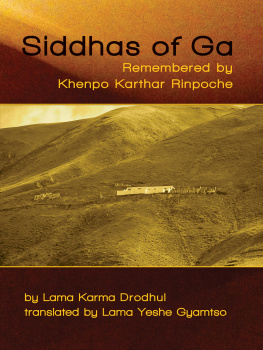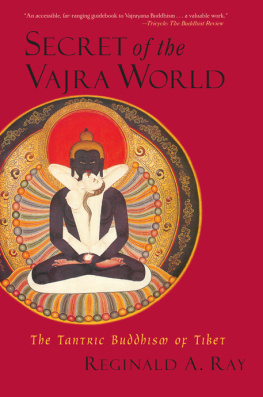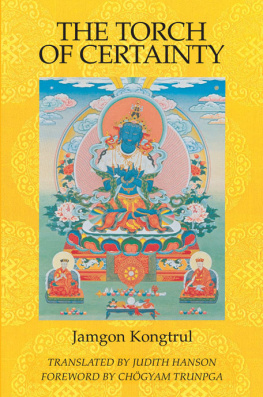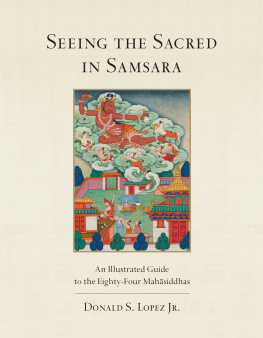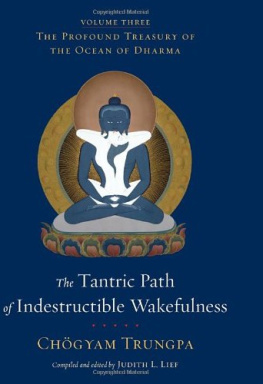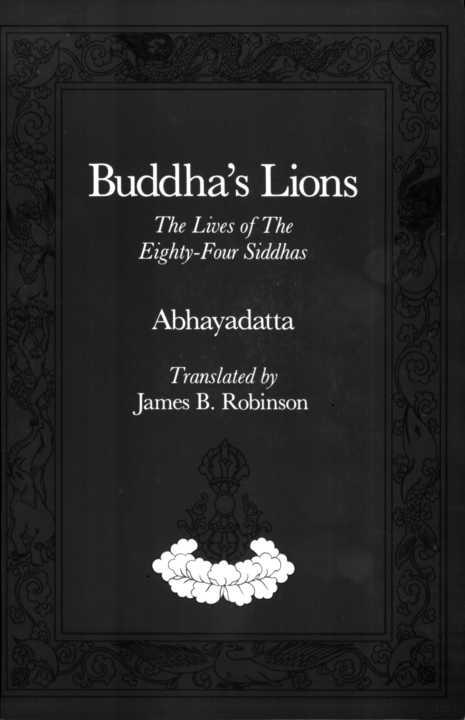
Buddha's Lions
Buddha's Lions
The Lives of the Eighty-Four Siddhas
Caturasiti-siddha pravrttiby AbhayadattaTranslated into Tibetan asGrub thob brgyad cu rtsa bzhi'i to rgyusby sMon-grub Shes-rabTranslated into English byJames B. Robinson





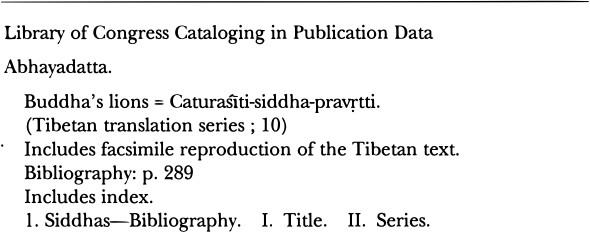
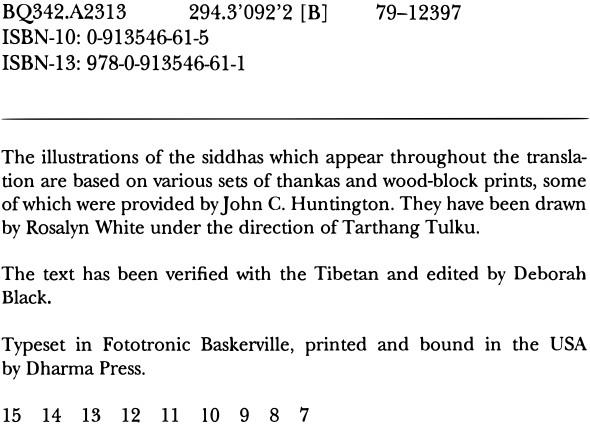
Contents
...................................... xi
....................................... xiv
.................................... 2
The Translation
.................................. 25
................................. 57
................................. 93
.................................. 98
................................ 110
................................ 131
................................ 136
................................. 138
................................. 143
................................ 153
................................. 155
............................. 158
................................ 163
................................. 180
................................. 182
................................. 184
................................. 186
................................ 188
................................. 193
................................. 201
................................. 220
................................. 224
................................. 227
................................. 236
.................................. 240
................................ 242
................................ 247
.................................. 256
.................................... 259
Appendices
.................................. 262
................ 284
................................. 289
................................. 311
....................................... 392
....................................... 399
Foreword
The siddha tradition could, in many ways, be considered the foundation of Tibetan Buddhism, for the siddhas and their lives provide us with a central vision of the Vajrayana teachings, the way to live in perfect freedom. The siddhas offer a special form of realization that cuts through confusion, like wind through clouds, to reveal clarity and confidence, inner health and well-being. More than simply life stories, these biographies embody profound teachings designed to contribute to our inner development. When we understand the siddhas' teachings, it is possible that we, here, today, can gain enlightenment. The way is truly simple, and open to us.Because the enlightened mind is beyond duality, the yogin and his teachings can manifest in any form: they may even be `hidden' within our ordinary reality. Yet before we can take full advantage of the Vajrayana teachings, there must be preparation, which may take many years. Such preparation may manifest in different ways, perhaps through experiencing deeply the frustrations of life in the world, or even by living a monastic life. After such preparation there must then be the right juncture of well-prepared disciple and enlightened teacher; only then can the teacher trans mit the Buddha's realization, so that enlightenment may be found within a single lifetime.This text is perhaps the most comprehensive work in Tibetan to be found on the siddhas, and the one most representative of the various siddha traditions in Tibet. All of the siddhas in this text are Indian Masters who could be considered the founders of the siddha lineages that passed into Tibet during the eighth to the eleventh centuries. The list of siddhas, as well as some of the facts of their histories may differ, however, according to the various lineages. For example, some will recognize the siddha Sakara as Padmasambhava although many aspects of his history as found here and elsewhere are not the same.The siddhas often appear under different names when they show themselves in different forms. Santideva, for example, reveals several different aspects in this text, appearing not only as scholar and siddha, but also as the monk Bhusuku. Each of these aspects is so unique, it may be difficult to see them all as expressions of the same person. Likewise, although other of the famous philosopher-siddhas such as Dharmakirti, Dignaga, Candrakirti, Candragomin, and Mar-me-mdzad are among the eighty-four, we may not know them in their different manifestations.These and other siddhas are remembered for their writings which are expressed both in narrative and in the form of dohas, songs of enlightenment. Just as the siddhas inspired growth in all those whose lives they touched, their songs can uplift the quality of our lives as well. For the teachings of the doha, while directed toward ordinary people, are not in ordinary language, but in a language illumined by understanding. This inner lightness points the way through surface meanings to unfolding levels of realization, making each doha the actuality of perfect liberation.The translation of poetry is difficult in any language, and translation of the doha presents unique problems. These days translators often try to solve their difficulties by turning to dictionaries as their gurus, depending on words to point out the meanings of the teachings. Yet the Buddha's teachings, in being directly a way of life, themselves point to the need for direct contact with the living meaning and embodiment of the Dharma.The way this translation came into being reflects an understanding of the need for this process. As much as was possible with the limited resources of this age and time, the translator, James Robinson, undertook his task in the traditional manner, going to a learned lama, a living source of the teachings, to discover the meanings and to clarify those passages which were unclear. That he felt such a responsibility to the text is important, for this book is a symbol of the teachings passing to the West as they once passed from India to Tibet.Dharma Publishing was created to make works such as this available in English. At first, in this pioneer scholarship, there is bound to be a certain roughness. In the future, here as in Tibet, there will certainly be many editions and revisions that will finally polish these works to a final form. Texts such as this provide a foundation, and are an important contribution to the knowledge of Buddhism in the West.
Tarthang Tulku
Padma Ling, 1979
Preface
In India and Tibet, it is customary to begin a text with invocation and praise of one's teachers. It is most appropriate that I, also, begin in this way.It was the late Richard H. Robinson, while we were sitting on the shore of Lake Mendota in Madison, Wisconsin, who suggested that I study the lives of the siddhas and translate their biography. Anyone who works in Buddhist Studies owes a great deal to him; for he was not only a fine scholar, he was a memorable presence.It was my very good fortune that Geshe Lhundup Sopa consented to serve as resource and advisor to this work. He spent many hours going over the stories with me-often more at my convenience than his-and offered many corrections to my translations. He is truly the embodiment of patience (bsod pa). Being a scholar of Madhyamika and a logician of note, he was able to bring a highly trained and critical mind to the translating problems this work presented. He explained the various ways in which thoughtful people within the tradition have seen the siddhas. This sort of information is obtainable in no other way. He is an inexhaustible source of insight, truly an `auspicious friend' (dge shes).I also wish to thank Dr. Stephan Beyer and Dr. Minoru Kiyota, who were both, in their own ways, encouraging and instructive. Credit must also be given to Mr. Elvinjones, whose sharp and incisive comments have contributed greatly to my understanding of Buddhism in particular and religion in general.I wish also to thank my wife Linda, who was spared the original process of translation, but with patience endured its revision.
Next page


